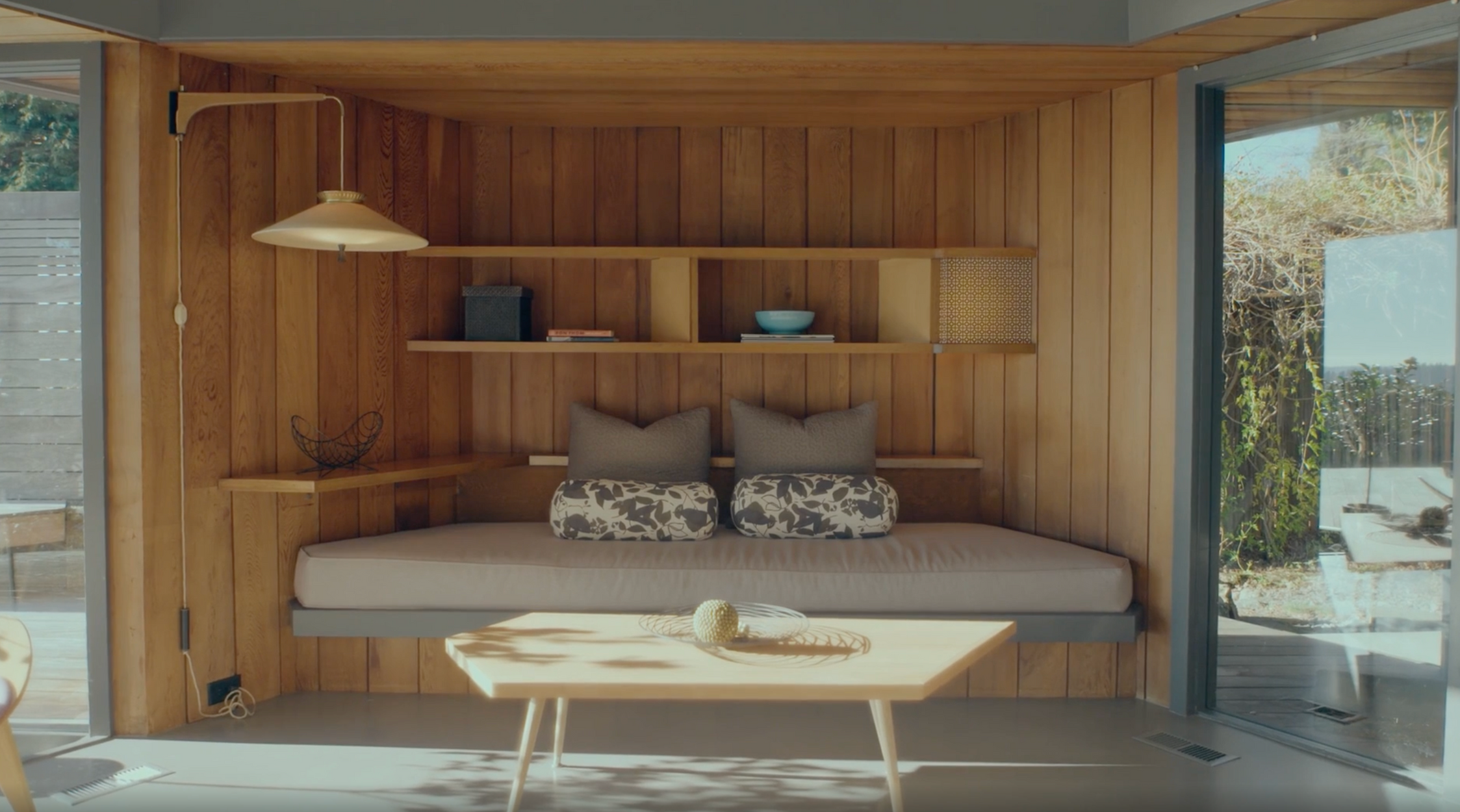Domestic Labour, Responsive Architecture and Minimalist Camp
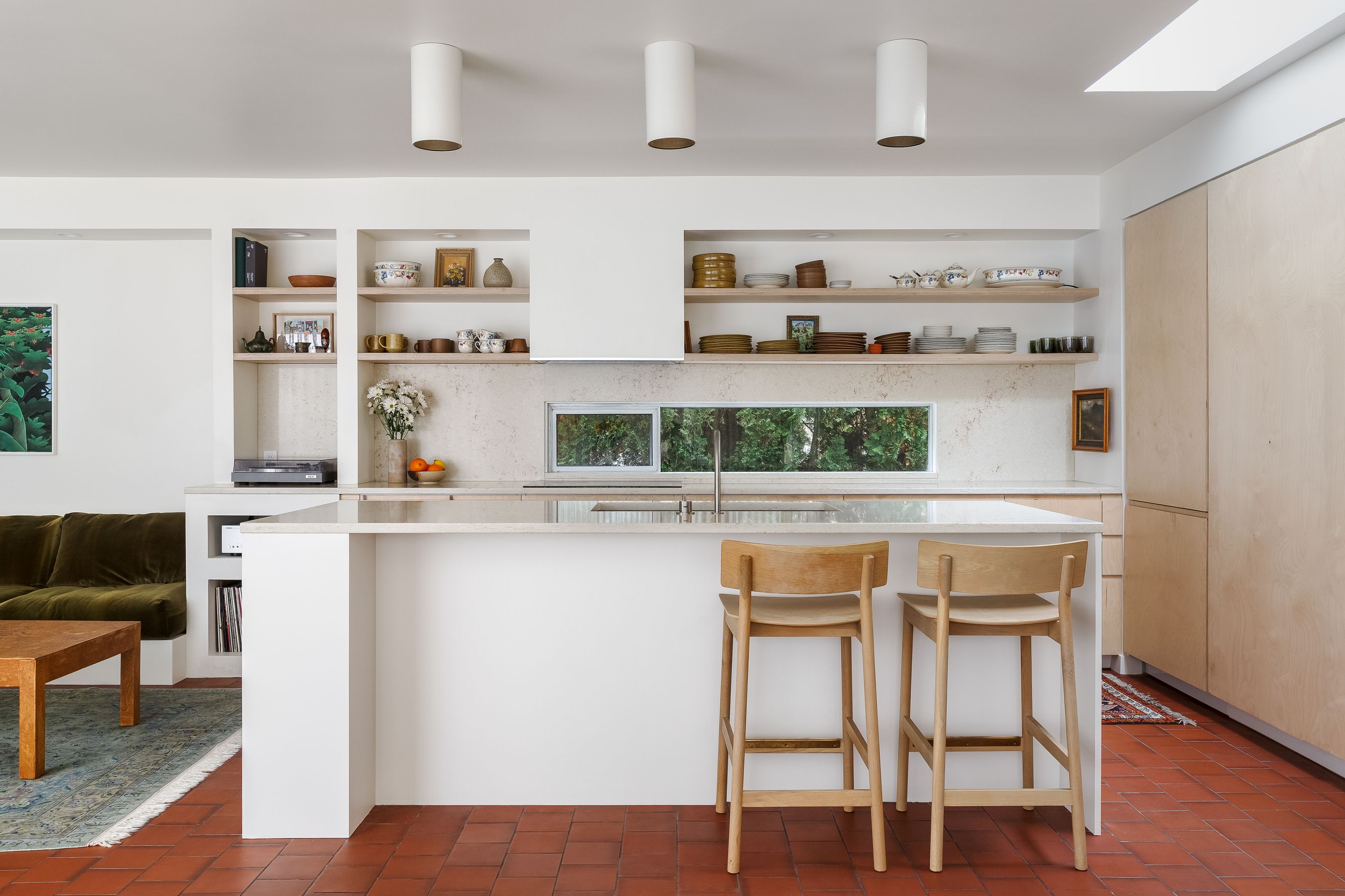
Whiteside Residence, interior design by Sukkau and Callander
Friends and colleagues Shiloh Sukkau and Caitlin Jones sat down to discuss Sukkau’s latest objects and the path she has taken to get to them.
Caitlin Jones
You and I first became connected when you asked me to be on your Master’s thesis committee. You had been interested in a project I had done when I was at Western Front called Urgent Imagination, which looked at intersections of Vancouver’s real estate market, urban land use policies, architecture and public art.
Shiloh Sukkau
Yes, and we still talk about these subjects all the time! While I was doing my architecture degree at UBC, I did a residency at the Banff Center on Public Art with Heather Peak and Ivan Morrison, artists from the UK whose work is very architectural. After that residency public art became this legitimate place in my mind where my interests in architecture and art could potentially come together. And so I ended up doing my thesis on Vancouver’s public art policy.
CJ
We could go on and on about that, but we’re here to talk about other parts of your practice. You’ve had a kind of interesting trajectory since you graduated—from architecture school, to a traditional architecture practice, to starting your own firm, and now this new project, or iteration or whatever we might call it.
SS
After I graduated, I decided to pursue my architecture certification, motivated in part because the statistics on women in the industry are still much lower than they should be—for a variety of reasons. I had been working on my own, doing small commercial projects since my third year at UBC, but I went to work at Birmingham and Wood Architects and Planners, a boutique firm in Gastown After working there on larger multi-family projects, I started September with my classmate and colleague Brendan Callander. This was in the fall of 2019 and while we hadn’t intended to, and in part because of the pandemic, we ended up with a very conventional residential architecture practice. We were very fortunate to have great clients and made it through covid but after three years, I left in part because there was an important component of my work that didn't fit into the model that we had built.
So now I've started what I'm calling an applied art practice, and focusing on architecture and functional objects. I'm not an industrial designer, I'm not even necessarily that interested in using “design” as a term. “Applied art” is an historical category that in the past included architecture and functional decorative objects. It feels like the most accurate term for what I am doing.
CJ
Another mutual preoccupation of ours are the relationships between architecture, design, feminism and motherhood and how those relations play out in domestic spaces. You had Uma right after art school, and cared for a toddler through your Masters. How do you think your experience as a young mother has shaped the way that you think about the spaces that you work in and the spaces that you want to create.
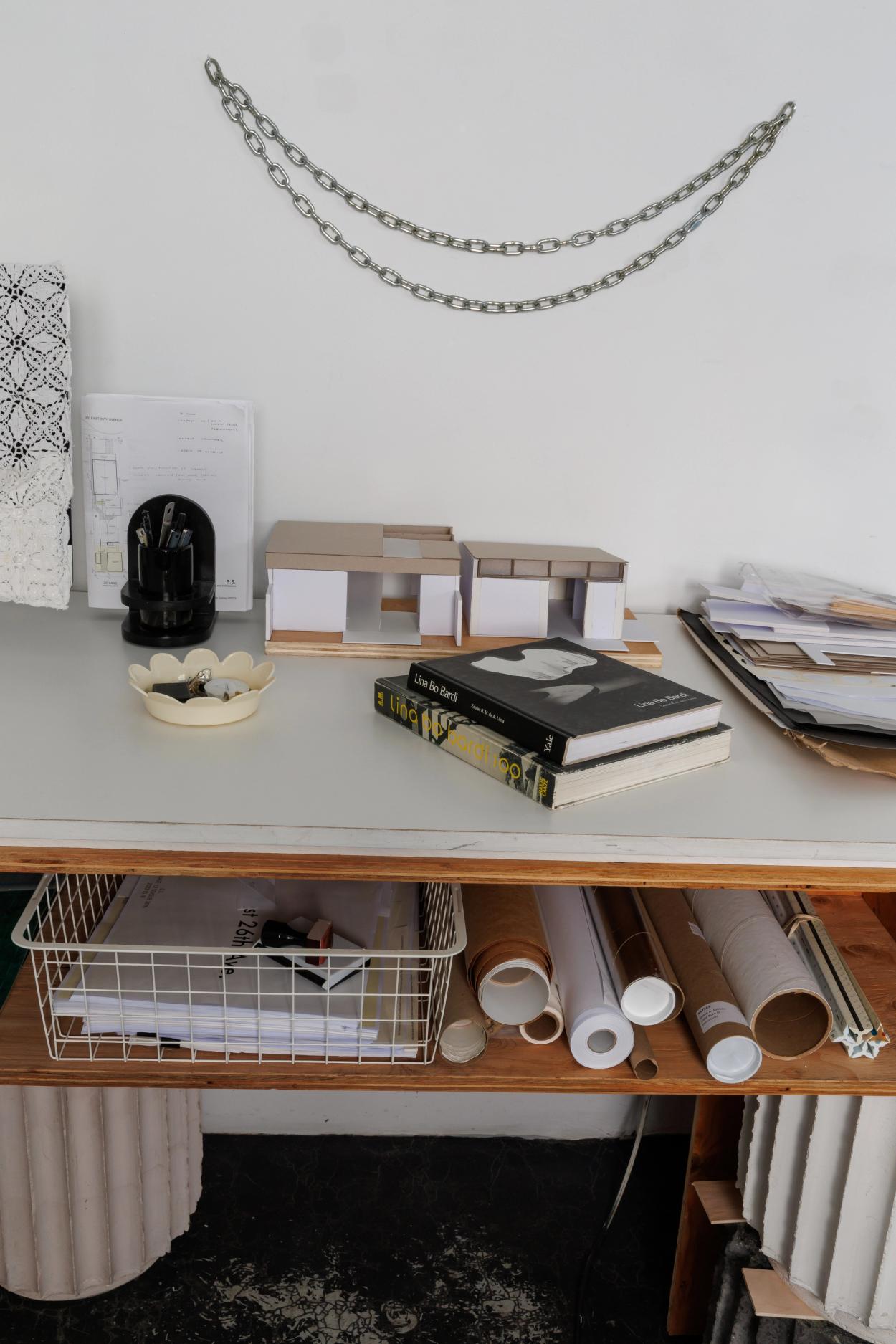
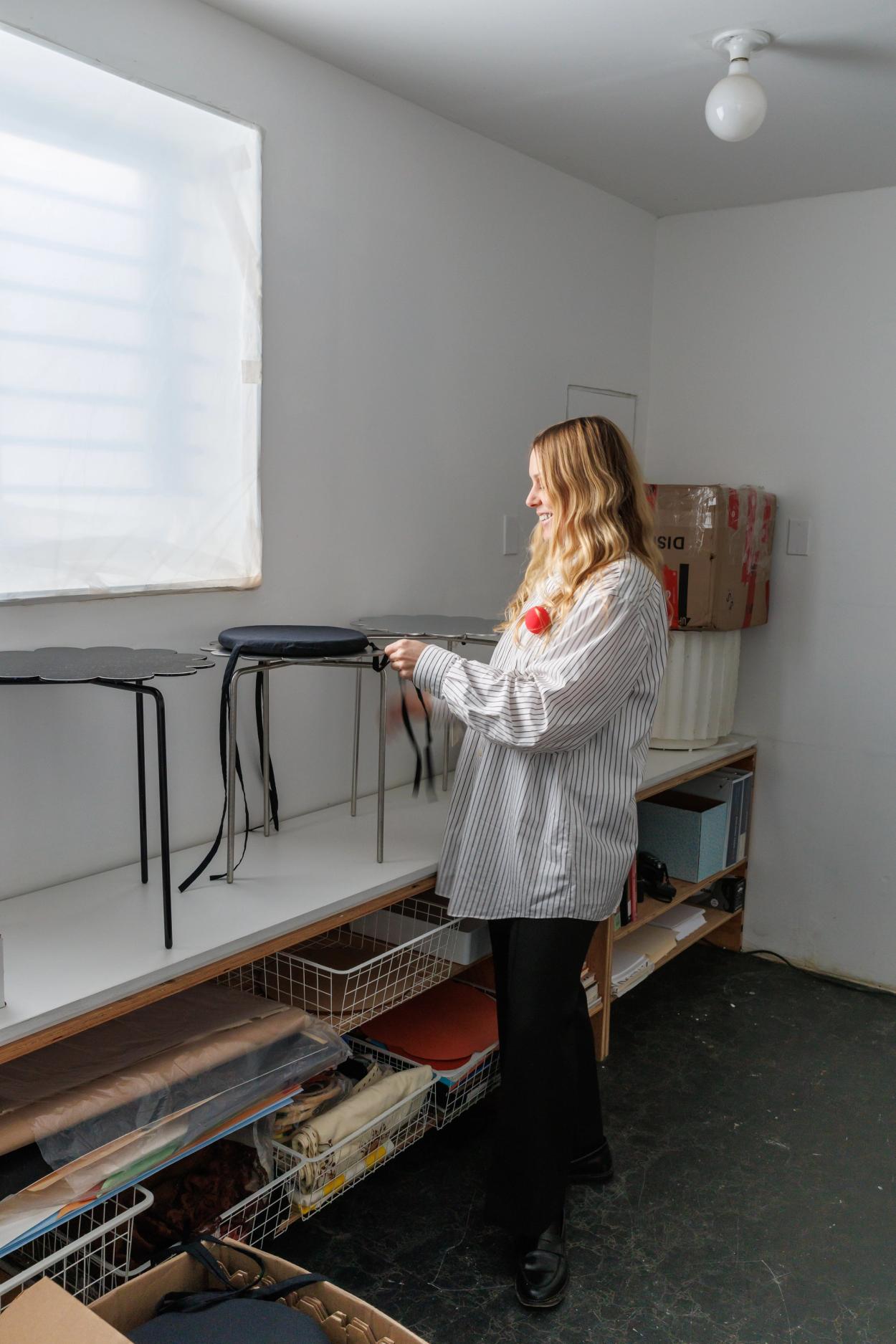
I'm not an industrial designer, I'm not even necessarily that interested in using “design” as a term. “Applied art” is an historical category that in the past included architecture and functional decorative objects. It feels like the most accurate term for what I am doing.
SS
I think most specifically, my experiences as a mother, then student, then architect have shaped the way I think about space is that there is essentially no divide between my domestic life and my work life. My mother had some radical ideas around motherhood and labour and how women should be compensated for this undervalued work. And so for me wanting to be a professional, it was almost like being a mother and being a professional was something you couldn't do—because you already had a job. And so I think in that sense, my domestic space and my workspace were always conflated because Uma was always with me.
CJ
Are there examples of women architects, designers or cultural workers that you look to for inspiration? In terms of the spaces they create? Or their processes?
SS
More recently, I have been interested in the stories of women who managed to have some success in their lifetime, as opposed to just being included in the revised history of art and architecture.
CJ
Lina Bo Bardi is obviously an intriguing example of a woman who was both an architect, artist and maker of objects who found real success in her time, and is also enjoying a bit of resurgence at the moment.
SS
Absolutely, and arguably she should have received even more recognition during her time, but she did manage to make a significant body of work that is extremely beautiful and raw. She had an interesting process that was deeply invested in her observations of how people used space. Apparently, when she was working on the SESC Pompeia—an old factory in São Paulo that the government wanted to convert into a sports and cultural complex—she wanted to call it a “leisure centre” and argued to keep the factory and adapt to the ways in which people were already using it. As an example, while she was visiting the site early on there were kids playing in puddles of water that had collected and that then inspired the indoor water feature in one of the communal spaces. So she was sort of formalizing the informal and was interested in the handmade and flattening hierarchies between what was considered high and low culture.
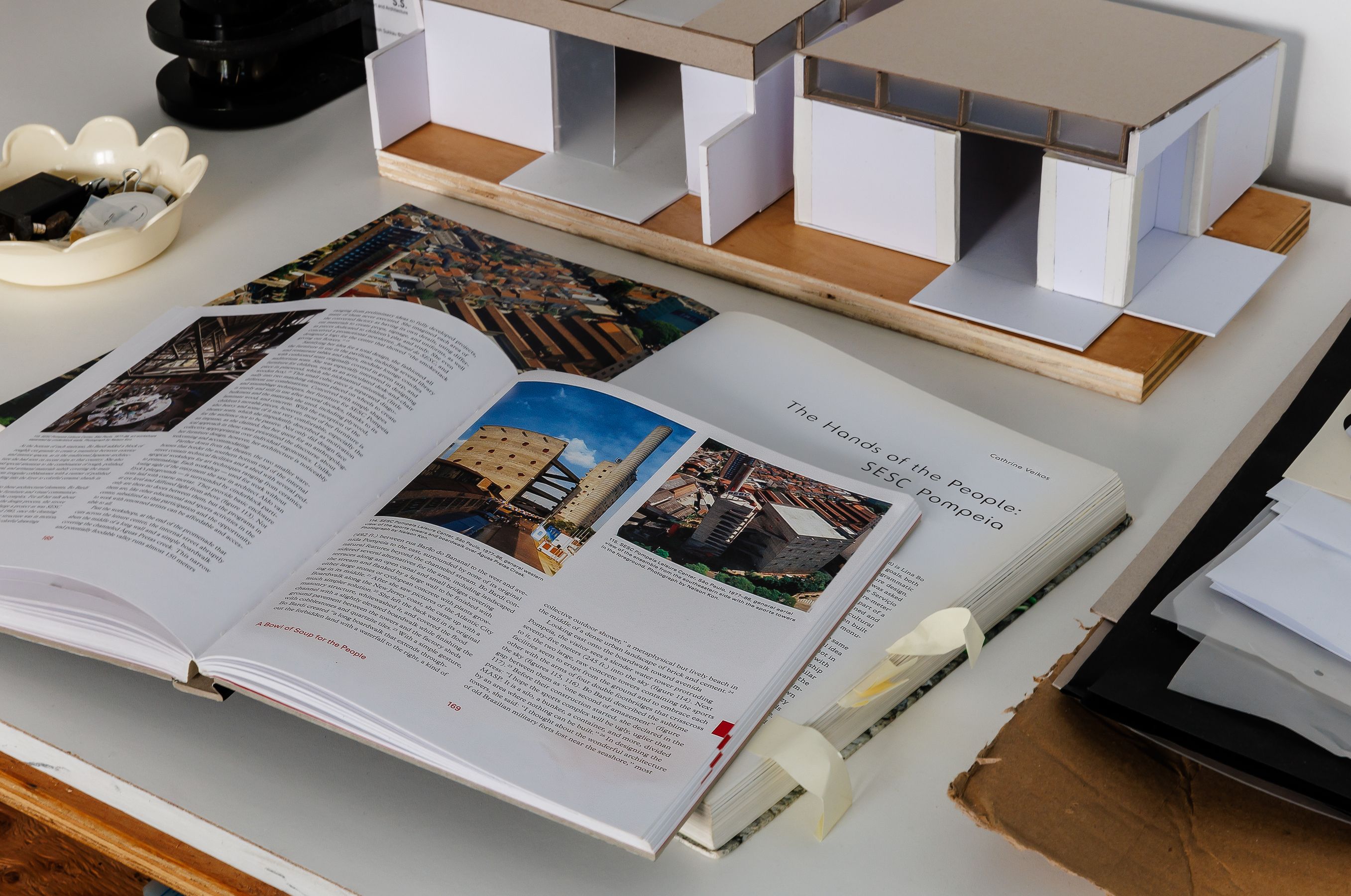
CJ
This idea of being responsive to existing structures and how people actually use space really comes out in some of your domestic projects.
SS
Totally. A good example is a recent project in Oak Bay. The Whiteside Residence, originally designed in 1987 by Vancouver Island-based architect Roger Smeeth
When we started at The Whiteside Residence I had to redraw it because we only had scanned copies of the original drawings from the UVic archive. When you're redrawing someone else’s work, you develop a real understanding of the logic behind it. It is a very well-designed house—so many things about it were fantastic and also totally weird.
CJ
Tell me the weird!
SS
Well it had a hot tub, like in the house. It was the one thing in this great design that didn’t really make sense. And the second owners of the house didn’t use it, so it was covered up. Apparently, when they pulled it out and it was on the side of the road, someone came by and was like, “that hot tub was the reason for [the original couple]’s divorce.” It was like it never should have been there.
One of the ways I thought about that project is that you have this space and it has these three components or layers woven together. The original house, designed in the 80’s by Smeeth which was in pristine condition, our intervention/renovation which we did as minimally as possible, and then the client’s own personal story and collection of furnishings.
As an example we introduced a built-in seating area connected to the new kitchen. The client’s grandmother was the matriarch of their family, and after she passed away our client collected pieces from her home and one of them was her curtains which was then used to upholster the cushions. That's why there's lines in the upholstery, they’re from the sun bleaching that happened in his grandmother's windows.
We were able to keep the original flooring and some of the lighting fixtures, and could improve part of the layout once the hot tub was removed. We basically modernized the home but kept the integrity and style so the story of the home feels very cohesive.

Whiteside Residence, interior design by Sukkau and Callander
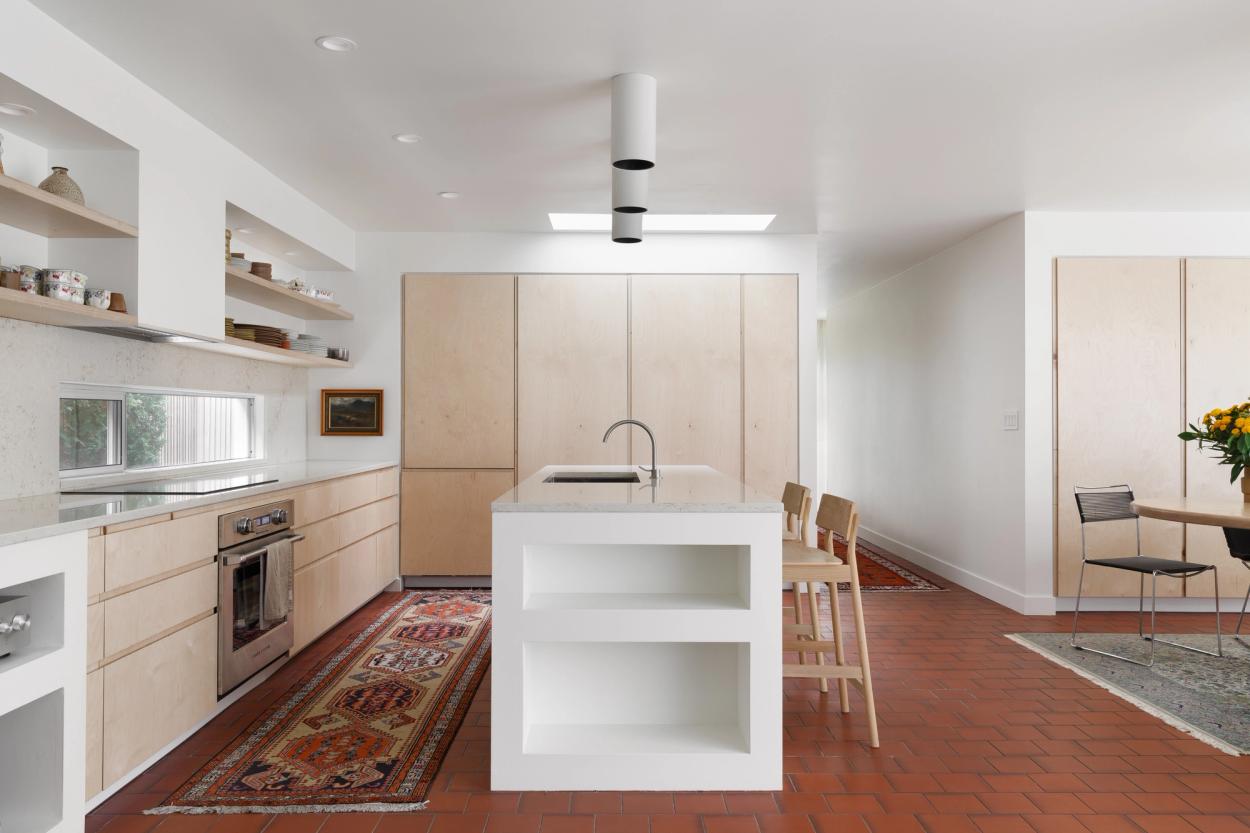
Whiteside Residence, interior design by Sukkau and Callander
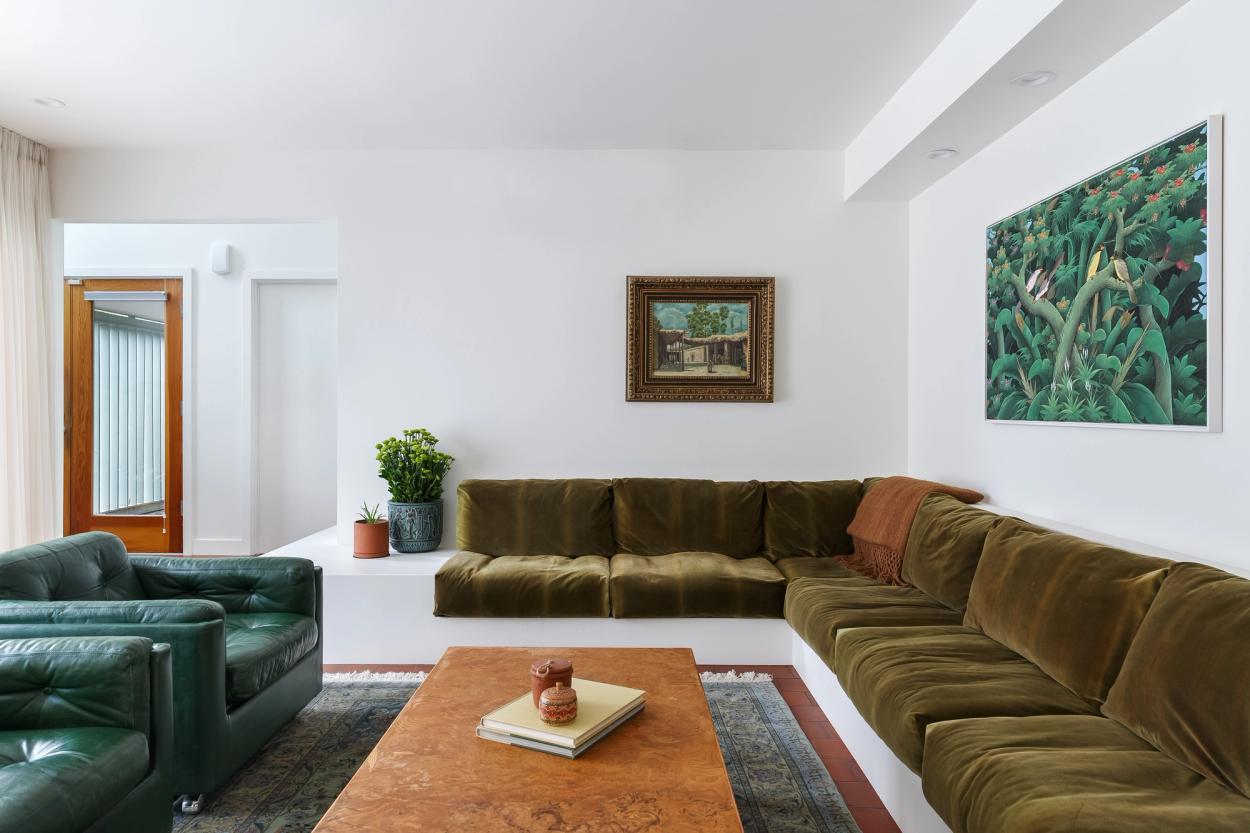
Whiteside Residence, interior design by Sukkau and Callander

Whiteside Residence, interior design by Sukkau and Callander

Whiteside Residence, interior design by Sukkau and Callander
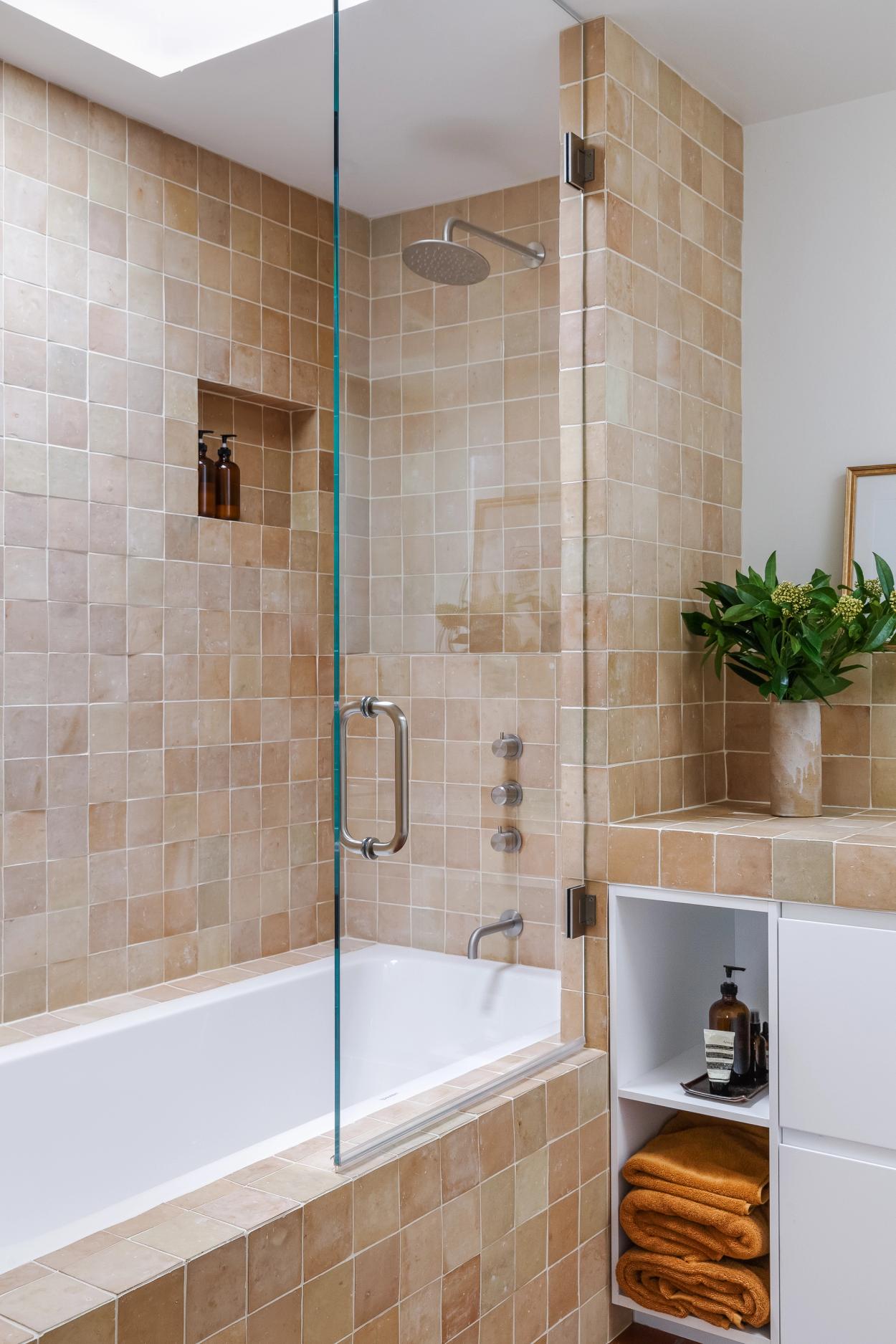
Whiteside Residence, interior design by Sukkau and Callander
CJ
How much of your focus on liveability do you think has to do with your own experience of living, working and raising a kid in the same spaces?
SS
I would say a hundred percent. The number one thing for me is to get as much function out of a space, or piece of furniture as you can because often you're switching from doing some form of professional work and then making dinner or folding your laundry. I am an advocate of spaces and objects that are both useful and beautiful, neither is much good on its own.
CJ
When you transitioned out of September you really turned your focus to making objects.
SS
I come from a very DIY upbringing, and I've never liked shopping for clients and so I’ve spent a lot of time professionally and personally working on custom pieces, especially in my commercial work. I would make everything I could, tables, lights, handles, seating, anything the clients would let me
I had always intended to create functional objects that were available more widely but I could never find the time until I made it a priority last year. Architecture is such a specific and exclusive service, most people are never going to hire an architect. I like the idea that someone may never need my services, but maybe my work resonates with them and they could have a piece for their home.
CJ
Can you describe the objects you’ve made that are currently in production, or soon to be?
SS
I am currently working on a stool. This idea started in 2017, and I made a number of crappy versions until recently when I had a small edition of them made locally. Essentially it's a stacking stool with a scalloped top that is shaped like a flower, or petals, and the legs sit in between the petals as you stack them. So there's a relationship between how many legs there are, how many petals there are and how many stools you can stack and you get a variation on the shapes based on that relationship. There’s a lot about it that I like, it follows the tradition of the three-legged stool, and it's also a bit “difficult” in that it can’t be flat packed and it’s heavy. It’s utilitarian but also has a formality to it.
I also have these steel hands that go on the wall. They were drawn to look like gloves and work like wall hooks. You can hang things on them, but you also don’t have to. Right now I am working on variations of these two objects and trying to sort out what it is that I’m trying to do with them. It's part intuitive and part rational—the function is almost a secondary element.


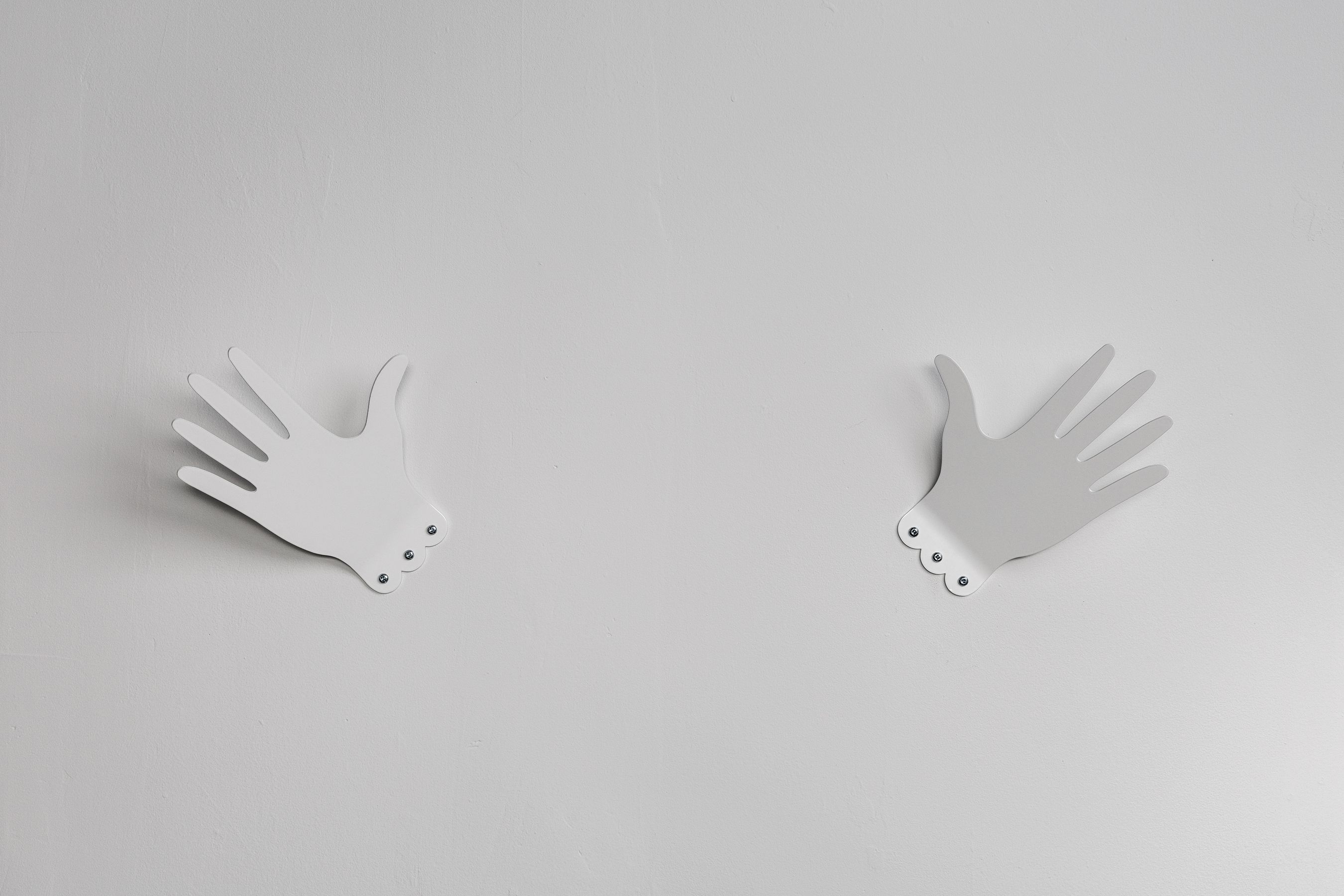
CJ
What inspired these—I want to say humorous or maybe whimsical, but those don’t really seem to cover it—objects?
SS
Something that keeps coming up for me is Surrealism. I was never really into it, but a curator friend suggested I look at the fashion designer Elsa Schiaparelli and some of her early work and collaborations with Salvador Dali. Surrealism, and other movements like Dadaism too, these kinds of proto-punk movements.
CJ
Right, their interests in challenging norms politically and psychologically, but also aesthetically through a sort of unexpected visual language. Obviously, those groups have long and varied histories, but I can for sure see that influence.
SS
Another thing I’ve been thinking about is this idea of camp. Ru Paul describes camp as being able to see the facade of life, seeing the absurdity of the world we live in. He refers to it as “being in on the joke.” But I’m also a minimalist, so these things are not necessarily cohesive.
CJ
“Minimalist camp” is a really apt descriptor of the objects you’re making. Susan Sontag in her essay “Notes on Camp” refers to it similarly, deliberately pointing out the artifice of something and simultaneously taking great joy in it.
SS
Yeah definitely. The word I've been avoiding is playful. I mean, you could think of playful as something radical, but ...
CJ
... it doesn't give you enough information.
SS
Yeah, exactly. Yeah. It's inadequate to describe the quality of what I'm interested in.
And I think my recent interest in Surrealism, or camp makes sense right now with what's going on in the world. Things are in many ways, peak insanity. And so I’m trying to recognize or even reaffirm even just for myself that we can make and do things another way.
CJ
Right, we are allowed to make different choices, be nimble; change the way we’re doing things, building things, thinking about objects, design, etc.
SS
Right! And we do this through ideas, we do this through action, we do this through materials, and also personally. Right now I am specifically interested in building a practice where my work and interest in art, objects and architecture can support each other.
Shiloh Sukkau is an architect and artist utilizing analogue processes, functional materials and minimal forms to make personal objects and spaces intended for everyday life. Sukkau completed her Bachelor of Fine Art at the Emily Carr University of Art and Design and a Master of Architecture from the University of British Columbia. She is a registered architect with the Architecture Institute of British Columbia and works with select cultural, private, and commercial clientele.
Caitlin Jones is a long-time cultural worker, curator and writer—working with and within a range of institutional and independent contexts. As Executive Director of BCA she was responsible for the development and operations of multiple affordable real-estate projects for the cultural community. As the Executive Director of the Western Front Society in Vancouver, in addition to her director role, she curated programming, policy and dialogue around issues of urban design and development, and the roles of artists within it. Prior to her move to BC she worked at the Solomon R. Guggenheim Museum and Rhizome.org in New York, NY.
Photography: Mary McNeill Knowles


